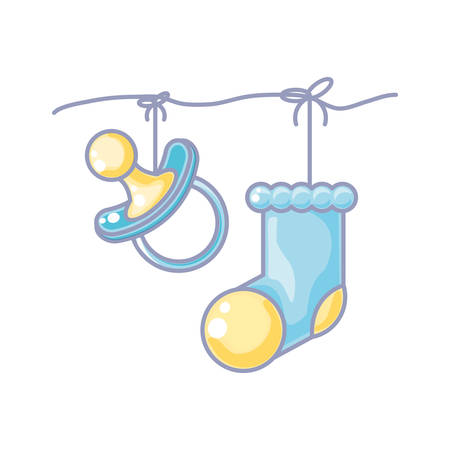1. Understanding the Different Types of Breast Pumps
Choosing the right breast pump starts with understanding the different types available. Each type has its own benefits, and the best choice depends on your lifestyle, pumping frequency, and personal preference. Below, we’ll break down the three main types: manual, electric, and wearable breast pumps.
Manual Breast Pumps
Manual breast pumps are operated by hand, requiring you to squeeze a handle or lever to create suction. They are simple, quiet, and typically more affordable than electric options.
Pros:
- Lightweight and portable
- Quiet operation
- More affordable
Cons:
- Requires manual effort
- Not ideal for frequent pumping
Electric Breast Pumps
Electric breast pumps use a motor to generate suction, making them more efficient for regular pumping sessions. They come in single or double options, allowing you to pump one or both breasts at the same time.
Pros:
- Less effort required compared to manual pumps
- More efficient for frequent pumping
- Often comes with adjustable suction levels
Cons:
- Bigger and less portable than manual pumps
- Can be noisy
- Requires a power source (battery or outlet)
Wearable Breast Pumps
Wearable breast pumps are hands-free devices that fit inside your bra, allowing you to pump discreetly while on the go. These pumps are battery-operated and designed for convenience.
Pros:
- Hands-free and discreet
- Great for multitasking
- No external tubes or wires
Cons:
- Tends to be more expensive
- Suction may not be as strong as traditional electric pumps
- Battery life can be limited
Comparison of Breast Pump Types
| Pump Type | Portability | Suction Strength | Ease of Use | Best For |
|---|---|---|---|---|
| Manual | High | Mild to Moderate | Takes Effort | Occasional Pumping & Travel |
| Electric (Single/Double) | Moderate | Strong | User-Friendly with Settings | Frequent Pumping & Working Moms |
| Wearable | Very High | Moderate to Strong (Varies by Brand) | Easiest Hands-Free Option | Pumping On-the-Go & Multitasking Moms |
No matter which type you choose, its important to consider your daily routine and how often youll be pumping. Finding a pump that fits your needs will make the process much easier and more comfortable.
2. Choosing a Breast Pump Based on Your Lifestyle
Finding the right breast pump depends on your daily routine and lifestyle needs. Consider factors such as your work schedule, travel frequency, and how often you plan to pump. Below, we break down different lifestyles and the best pump options for each.
Work Schedule
If youre returning to work and need to pump regularly, an efficient and portable pump is essential. Here’s a quick guide to help:
| Work Situation | Recommended Pump Type | Key Features |
|---|---|---|
| Full-time office job | Double electric pump | Fast pumping, hands-free option available |
| Part-time or remote work | Single electric or manual pump | Lighter weight, more flexibility |
| No fixed schedule (freelancers, gig workers) | Wearable or battery-powered pump | Cordless convenience, discreet pumping |
Travel Frequency
If you’re frequently on the go, whether for work or personal reasons, a lightweight and portable pump is crucial. Consider these options:
Pumping Frequency
Your choice of breast pump should also match how often you plan to express milk:
| Pumping Frequency | Pump Recommendation | Main Benefits |
|---|---|---|
| A few times per week | manual pump or single electric pump | Easier to store and budget-friendly. |
| A few times per day | a double electric pump | Saves time with efficient milk expression. |
| Pumping exclusively | a hospital-grade or high-performance double electric pump | Mimics baby’s feeding pattern for optimal milk supply. |
Selecting the Right Pump for You
The best breast pump is one that fits seamlessly into your daily routine. Think about where and when youll be pumping most often, and choose a model that supports your lifestyle without adding extra stress.

3. Key Features to Look for in a Breast Pump
When choosing a breast pump, it’s important to consider key features that will impact your comfort and efficiency. Here are some essential factors to keep in mind:
Suction Strength and Adjustability
The suction power of a pump can greatly affect milk expression. Look for models with adjustable suction levels so you can find the most comfortable and effective setting for your body.
Portability
If youre always on the go, portability is a major factor. Compact and lightweight pumps are easier to carry, especially if you need to pump at work or while traveling.
Battery Life and Power Options
A reliable battery life ensures you can pump even when youre away from an outlet. Some pumps offer rechargeable batteries, while others use disposable ones. Consider whether youll need a pump that also works with a car adapter or USB charging.
Noise Level
Pumping in public or at work? A quieter motor will provide more discretion and allow for a more comfortable experience without drawing attention.
Comparison of Key Features
| Feature | Why It Matters |
|---|---|
| Suction Strength | Affects milk flow and comfort; adjustable settings provide flexibility. |
| Portability | Lighter and smaller pumps are easier to carry for busy moms. |
| Battery Life | A long-lasting battery helps when pumping away from home. |
| Noise Level | A quiet pump allows for discreet pumping in shared spaces. |
Selecting the right breast pump depends on your personal needs and lifestyle. By considering these key features, you can ensure a smoother and more efficient pumping experience.
4. Insurance Coverage and Budget Considerations
Breast pumps can be a significant investment, but the good news is that many health insurance plans cover them. Understanding your insurance benefits and exploring budget-friendly options can help you find the right pump without overspending.
Checking Your Insurance Benefits
Most insurance plans in the U.S. provide coverage for breast pumps under the Affordable Care Act (ACA). However, coverage details vary, so it’s important to check with your provider. Here’s how:
Steps to Check Your Insurance Coverage
- Call Your Insurance Provider: Ask if your plan covers a breast pump and what types are included (manual, electric, or hospital-grade).
- Check Approved Suppliers: Some plans require you to get your pump from specific medical supply companies.
- Understand Timing: Some insurers allow you to order a pump before your baby arrives, while others require proof of birth.
- Ask About Upgrades: Basic models may be covered fully, but you might have the option to pay extra for a higher-end model.
Budget-Friendly Options Without Compromising Quality
If your insurance only covers a basic pump or if youre looking for additional features, there are still ways to stay within budget while ensuring quality.
Comparing Breast Pump Options
| Pump Type | Average Cost | Pros | Cons |
|---|---|---|---|
| Manual Pump | $20 – $50 | Affordable, portable, easy to clean | Requires manual effort, slower pumping time |
| Single Electric Pump | $50 – $150 | Faster than manual, more affordable than double electric | Pumps one side at a time, may take longer |
| Double Electric Pump | $100 – $300+ | Pumps both sides at once, efficient for regular use | More expensive, requires power source |
| Wearable Hands-Free Pump | $200 – $500+ | Portable, discreet, no external tubing | Expensive, may have lower suction power than traditional pumps |
Savings Tips for Breast Pumps
- Use an HSA or FSA: Many breast pumps qualify for Health Savings Accounts (HSA) or Flexible Spending Accounts (FSA), allowing you to use pre-tax dollars.
- Look for Discounts: Some brands offer discounts for new moms or special promotions through retailers.
- Consider Secondhand Pumps with New Parts: If buying secondhand, ensure its a closed-system pump and replace all parts that come in contact with milk.
- Check Hospital Rentals: If you need a hospital-grade pump temporarily, renting from a hospital or lactation center may be cost-effective.
By checking your insurance benefits and exploring cost-saving options, you can find a high-quality breast pump that fits both your needs and budget.
5. Tips for Maximizing Comfort and Efficiency While Pumping
Pumping breast milk should be a comfortable and stress-free experience. The right techniques and equipment can make all the difference in maintaining your milk supply and making the process more efficient. Here are some expert tips to help you get the most out of your pumping sessions.
Find the Right Flange Fit
A properly fitting flange is essential for comfort and effective milk expression. If the flange is too small or too large, it can cause discomfort and reduce output.
| Flange Fit Issue | Signs to Look For | Solution |
|---|---|---|
| Too Small | Nipple rubbing against sides, pain, low milk flow | Try a larger flange size |
| Too Large | Areola getting pulled in, discomfort, inefficient suction | Try a smaller flange size |
| Correct Fit | Nipple moves freely without rubbing, good milk flow | No adjustment needed |
Create a Pumping Routine That Works for You
A consistent pumping schedule helps maintain supply and reduces stress. Consider these factors when setting up your routine:
- Pump at regular intervals: Aim to pump every 2-3 hours if exclusively pumping or after nursing if supplementing.
- Mimic babys feeding schedule: This helps regulate milk production and prevents engorgement.
- Pump in a comfortable environment: Find a quiet space where you can relax to encourage letdown.
- Avoid skipping sessions: Skipping pumps can lead to decreased supply over time.
Troubleshooting Low Milk Supply
If youre struggling with milk output, try these strategies to boost supply:
- Add extra pumping sessions: Power pumping (shorter, frequent sessions) can help stimulate production.
- Easily increase hydration and nutrition: Drink plenty of water and eat nutrient-rich foods that support lactation.
- Soothe stress levels: Relaxation techniques like deep breathing or listening to calming music can enhance letdown.
- Bottle-feed mindfully: If supplementing with formula, try paced bottle-feeding to prevent baby from preferring bottles over the breast.
Caring for Your Pump Parts
A clean pump ensures better performance and prevents contamination. Follow these cleaning tips:
- Wash pump parts after each use: Use warm soapy water or sterilize according to manufacturer instructions.
- Avoid moisture buildup: Allow parts to air dry completely before storing.
- Replace worn-out parts regularly: Valves and membranes wear down over time, reducing suction efficiency.
Pumping may take some trial and error, but finding what works best for you will make the experience smoother. By ensuring proper flange fit, maintaining a steady routine, and keeping your pump clean, youll maximize both comfort and efficiency while expressing milk.


